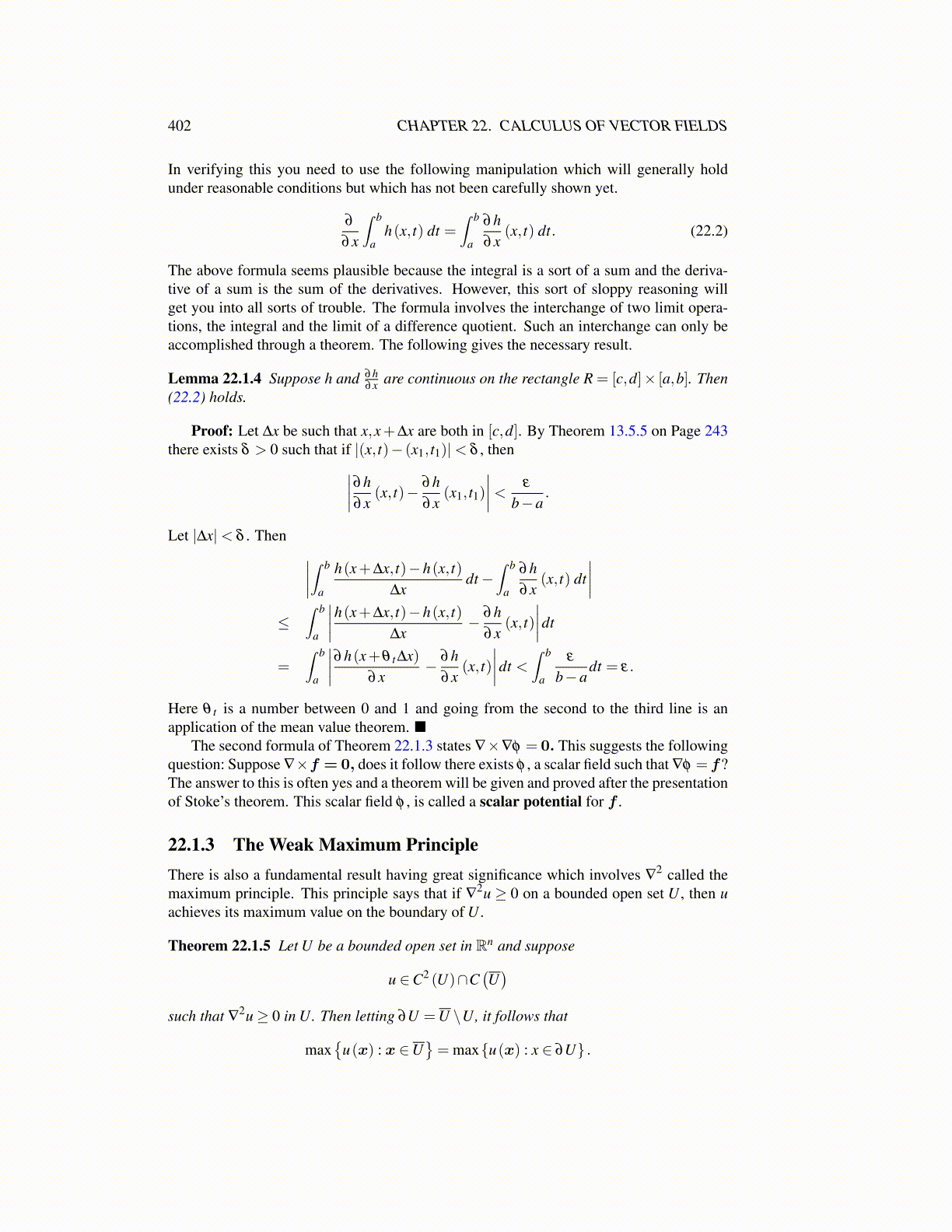
402 CHAPTER 22. CALCULUS OF VECTOR FIELDS
In verifying this you need to use the following manipulation which will generally holdunder reasonable conditions but which has not been carefully shown yet.
∂
∂x
∫ b
ah(x, t) dt =
∫ b
a
∂h∂x
(x, t) dt. (22.2)
The above formula seems plausible because the integral is a sort of a sum and the deriva-tive of a sum is the sum of the derivatives. However, this sort of sloppy reasoning willget you into all sorts of trouble. The formula involves the interchange of two limit opera-tions, the integral and the limit of a difference quotient. Such an interchange can only beaccomplished through a theorem. The following gives the necessary result.
Lemma 22.1.4 Suppose h and ∂h∂x are continuous on the rectangle R = [c,d]× [a,b]. Then
(22.2) holds.
Proof: Let ∆x be such that x,x+∆x are both in [c,d]. By Theorem 13.5.5 on Page 243there exists δ > 0 such that if |(x, t)− (x1, t1)|< δ , then∣∣∣∣∂h
∂x(x, t)− ∂h
∂x(x1, t1)
∣∣∣∣< ε
b−a.
Let |∆x|< δ . Then ∣∣∣∣∫ b
a
h(x+∆x, t)−h(x, t)∆x
dt−∫ b
a
∂h∂x
(x, t) dt∣∣∣∣
≤∫ b
a
∣∣∣∣h(x+∆x, t)−h(x, t)∆x
− ∂h∂x
(x, t)∣∣∣∣dt
=∫ b
a
∣∣∣∣∂h(x+θ t∆x)∂x
− ∂h∂x
(x, t)∣∣∣∣dt <
∫ b
a
ε
b−adt = ε.
Here θ t is a number between 0 and 1 and going from the second to the third line is anapplication of the mean value theorem. ■
The second formula of Theorem 22.1.3 states ∇×∇φ = 0. This suggests the followingquestion: Suppose ∇×f = 0, does it follow there exists φ , a scalar field such that ∇φ = f?The answer to this is often yes and a theorem will be given and proved after the presentationof Stoke’s theorem. This scalar field φ , is called a scalar potential for f .
22.1.3 The Weak Maximum PrincipleThere is also a fundamental result having great significance which involves ∇
2 called themaximum principle. This principle says that if ∇
2u ≥ 0 on a bounded open set U , then uachieves its maximum value on the boundary of U .
Theorem 22.1.5 Let U be a bounded open set in Rn and suppose
u ∈C2 (U)∩C(U)
such that ∇2u≥ 0 in U. Then letting ∂U =U \U, it follows that
max{
u(x) : x ∈U}= max{u(x) : x ∈ ∂U} .